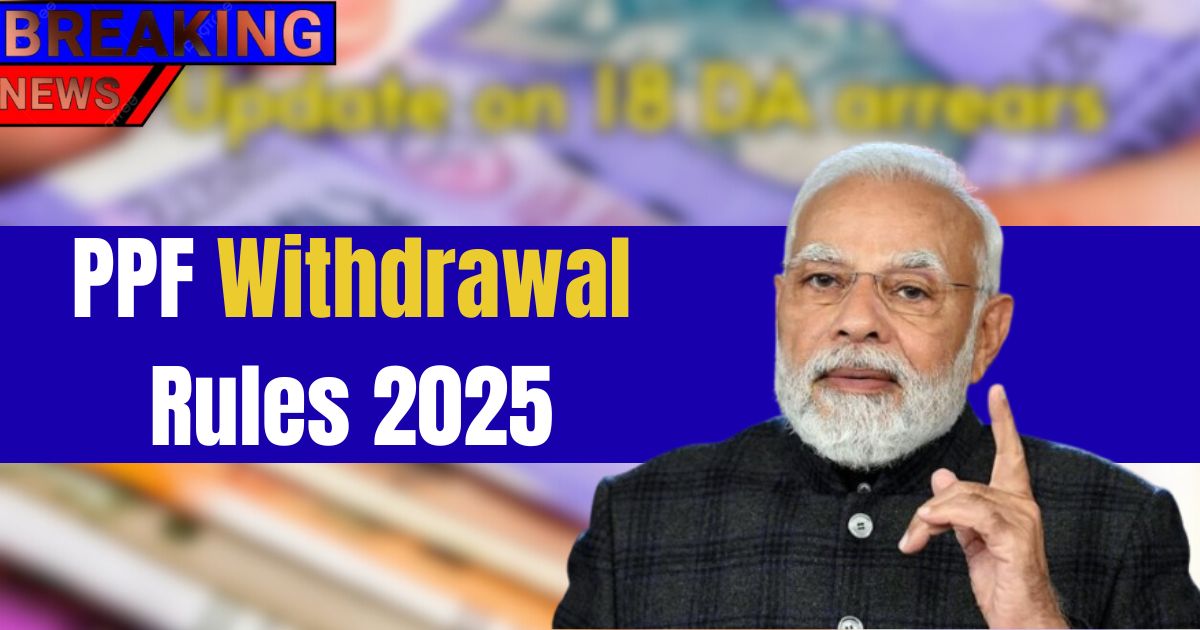Think of establishing a fund for your family’s future but wondering when you would be able to have a share of it without being penalized. The Public Provident Fund (PPF) is still India’s best option for safe, tax-free growing in 2025. The 7.1% interest rate is unchanged, so knowing the withdrawal rules makes it a wise decision to be able to take out money—whether it is for financial emergencies or getting the most out of your retirement.
The Core Lock-In
PPF requires your loyalty. Your money is locked in for 15 years starting at the end of the year in which you opened the account. The structure helps to develop the habit of saving with discipline. Many are tempted by the early access but the rules do not allow for your corpus to be completely drained. Everything reverts back to normal in 2025; however, life’s little emergencies will not be a problem as you will still be able to get access to some of your funds.
Partial Withdrawals
It’s not until the sixth financial year that one can start to make partial withdrawals. The amount you can withdraw is up to 50% of your balance based on the end of the fourth year or the previous year being higher—whichever is the case. Only one withdrawal a year can be done so that it does not become excessive. Imagine if you had opened an account in 2020 and by 2024 it was worth ₹8 lakh. In 2025 just ₹4 lakh could be the amount that you could withdraw, without taxes, thanks to pure EEE magic.
Premature Closure
God will not wait for 15 years till you die. Premature exit allows after five years but only for dire situations. Medical emergencies for you, spouse, or children are the ones that qualify. Higher education of self or children is also the case, and you just need to provide proof like admission letters. Moving abroad as an NRI will require you to close your account too. Is there a penalty? Yes, your interest will be reduced by one percent on the balance after closure. NRI accounts cannot be opened in 2025 but the existing one will reach maturity without an automatic extension—just close it and transfer to NRO.
Maturity And Extensions
Once 15 years are done? Take out all of it, tax-free! Or extend it in blocks of five years—automatic if it is untouched. If there are contributions, file Form H within a year. If not? Get interest without deposits. After the extension, withdrawals are limited to 60% of the opening balance each year—one per FY. A 2005 account holder can withdraw ₹12 lakh per year until 2025 with ₹20 lakh at the time of maturity in 2020.
Quick Guide
| Withdrawal Type | Eligibility Timeline | Maximum Amount | Key Restriction | Tax Impact |
|---|---|---|---|---|
| Partial | After 5 years (from 6th FY) | 50% of balance at end of 4th/previous year | One per FY | Tax-free |
| Premature | After 5 years | Full balance | Medical/education/NRI only; 1% interest penalty | Tax-free |
| Maturity | After 15 years | Full balance | None | Tax-free |
| Extended (no contrib.) | After each 5-year block | 60% of extension balance | One per FY | Tax-free |
Pro Tips For Smooth 2025 Withdrawals
- Prep Documents Early: Passbook, ID proof, and Form 2 (withdrawal application) speed up the process at banks or post offices.
- Go Digital: Use net banking for faster credits—eKYC from July 2025 simplifies it.
- Plan for NRIs: Existing accounts? Withdraw fully at maturity to avoid zero interest post-deadline.
- Maximize Tax Shield: Pair with 80C deductions—up to ₹1.5 lakh yearly contributions.
- Avoid Pitfalls: No withdrawals in first five years; loans beat early pulls for liquidity.
Also Read: Diesel Price Cut ₹5.50/Litre Per Litre Slashed What It Means For Consumers
